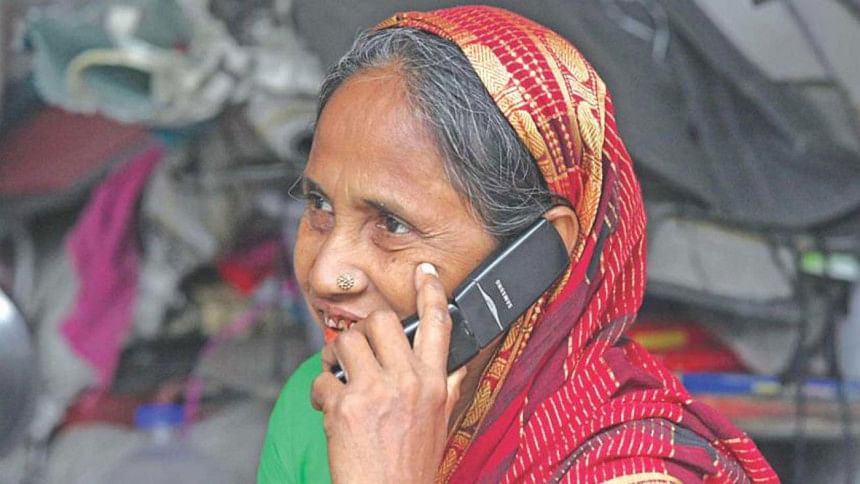Paradox of analogue life in a digital age

Last Christmas break, I took my daughter out to dinner when she flew in to see me in Vancouver. We decided to go to a Vietnamese restaurant to get the traditional pho, a warm bone broth soup with savoury beef chunks and hearty noodles. As I sipped my delicious pho and caught up with my daughter about her work and life as a recent graduate mining engineer, I glanced around the restaurant to observe my fellow patrons. Dozens of people were sitting at their tables, and a good number of them had their heads down, fiddling their smartphones while waiting for their food to be served. Their eyes darted up and down the screen, and they would only look up briefly when answering or asking a question. The endless screen watching, even in social settings always made me wonder "what is the point?" A few questions also swirl around in my head. How did the world wide web take over our analogue lives? What is so mesmerising about our handheld devices that amounts to this level of addiction?
I have been self-quarantined in my home for over a month now in Dhaka, Bangladesh, where I moved back recently from Vancouver, Canada. In this lockdown state, I continue to work from home and connect with my colleagues all over the country including some from our company headquarters in Kuala Lumpur and my boss, who is stuck in Yangon due to the travel restrictions. We participate in many team meetings throughout the day using online audio-visual aids. Our company also conducted several virtual townhalls with hundreds of employees in virtual attendance. However, in most cases, we try to avoid video calls due to the bandwidth limitations.
I also converse with a few of my colleagues in Vancouver to discuss a few initiatives that we started much before I left. The time difference works to my benefit since I can arrange my interactions before going to bed. Over the last few days, I have done several transactions through a mobile financial app called bKash. My wife was able to get groceries delivered at home by placing orders on a website, while I paid for cable TV, internet, electricity and phone bills using my smartphone. My teenage daughter who goes to an English medium school, becomes preoccupied during the school hours as she attends online classes from the comfort of her room. Some weeknights are spent having family time, watching YouTube or Netflix.
Seemingly, the internet has become the answer to a myriad of challenges ensuing from the strict nationwide measures to halt the transmission of the COVID-19. Many of the activities that are being conducted digitally today would have been performed through analogue means otherwise. Bridging our analogue lives to the digital world make us happily relieved during the lockdown and facilitate social distancing. That said, I still miss going to the office, meeting my colleagues, or going out for a walk to have some fresh air.
The unanswered paradox is that many of us are too immersed in our digital world while living analogue lives in normal times; we are able to do everything and anything without ever needing physical human interaction today.
From shopping groceries, virtual classrooms, online consultation with a physician or working from home to enjoy digital contents could have been the way of life today if the majority of the population were able to use most of these modalities. However, the reality is different with almost half of the world population without access to the internet. The so-called digital divide becomes worse when the least developed countries are considered. It also has a gender bias impacting women more than men.
Since its inception, digital divide is just not only a local phenomenon but also a global one. More than one billion children across the globe are unable to attend remote learning while locked at home due to COVID-19 restrictions now. Even in developed countries, internet access is often lower than perceived. Paradoxically, amidst the technological prowess of the United States of America, 12 million children in middle class homes are growing up without internet connection. In rural America, 19 million households still lack internet connectivity. Globally, 87 percent of the population in developed countries are connected to the Internet, compared to 47 percent in developing nations, and a mere 19 percent in impoverished countries.
In the context of Bangladesh, the nation has made impressive progress and was on track to become a middle-income economy by 2021, until the arrival of COVID-19. Governments have coined the Sustainable Development Goals to achieve their "Vision 2021". A major impetus was on information and communication technology (ICT) to bridge the digital divide by adopting technologies and improving knowledge base. Some indicators suggest that reasonable progresses have been made; for example, last year Bangladesh advanced to the rank of 115 out of 193 counties in the UN E-Governance Index climbing 35 steps since 2012. Government policies and initiatives have offered a positive atmosphere in implementing the roadmap toward a Digital Bangladesh. Today, many of us are enjoying the fruits of digitisation while being locked down at home.
However, there is a growing concern about the majority of the population continuing to live on the wrong side of the digital divide. They do not have reliable tools or means to connect to the Internet. This is not only limiting working from home or attending classes online but also defeating the greater purpose of a Digital Bangladesh. Except for a few private institutions, the online classroom is almost non-existent during this lockdown. The same applies to the work from home modality as only a handful of private sector offices are using the benefits of the large-scale digitalisation that the government has strived for over the years. As of February 2020, the number of mobile connections per capita in Bangladesh was equivalent to 99 percent of the total population, less than 20 percent of them had a smartphone. These numbers are 65 percent and 45 percent, respectively when the whole world is considered. Although Internet subscription in Bangladesh stood at almost 100 million, the broadband connectivity stayed at less than 6 million according to the data from the nation's regulatory body BTRC. The household computer ownership in 2019 was less than 6 percent, as per ITU.
The key focus of the digitalisation efforts either in local or global scenarios has mostly been on technology. This approach has offered a significant thrust for Bangladesh to address aspects of the digital divide in terms of ICT capabilities. Yet, the root cause of this divide is not just limited to technology, there are a number of other factors, such as income disparity, education level, geography and infrastructure playing a critical role in widening or closing the chasm.
With the small percentage of computers in households, limited broadband internet and the relatively low penetration of smartphones in Bangladesh, the paradox of digital divide may continue even when there might be a call for adopting many of the digital avenues explored today to become our way of life. We would have to relentlessly pursue our aspirations to become a true digital Bangladesh in a post COVID-19 world that may ultimately save us from our overcrowded capital city, its infamous traffic jams, pollution and enhanced public safety in the coming days. It finally started to dawn on me what was so magical about our handheld devices and why we needed to stay virtually connected more now than ever before.
Sabbir Ahmad, Director, Engineering at edotco Group. Email: [email protected].

 For all latest news, follow The Daily Star's Google News channel.
For all latest news, follow The Daily Star's Google News channel. 



Comments